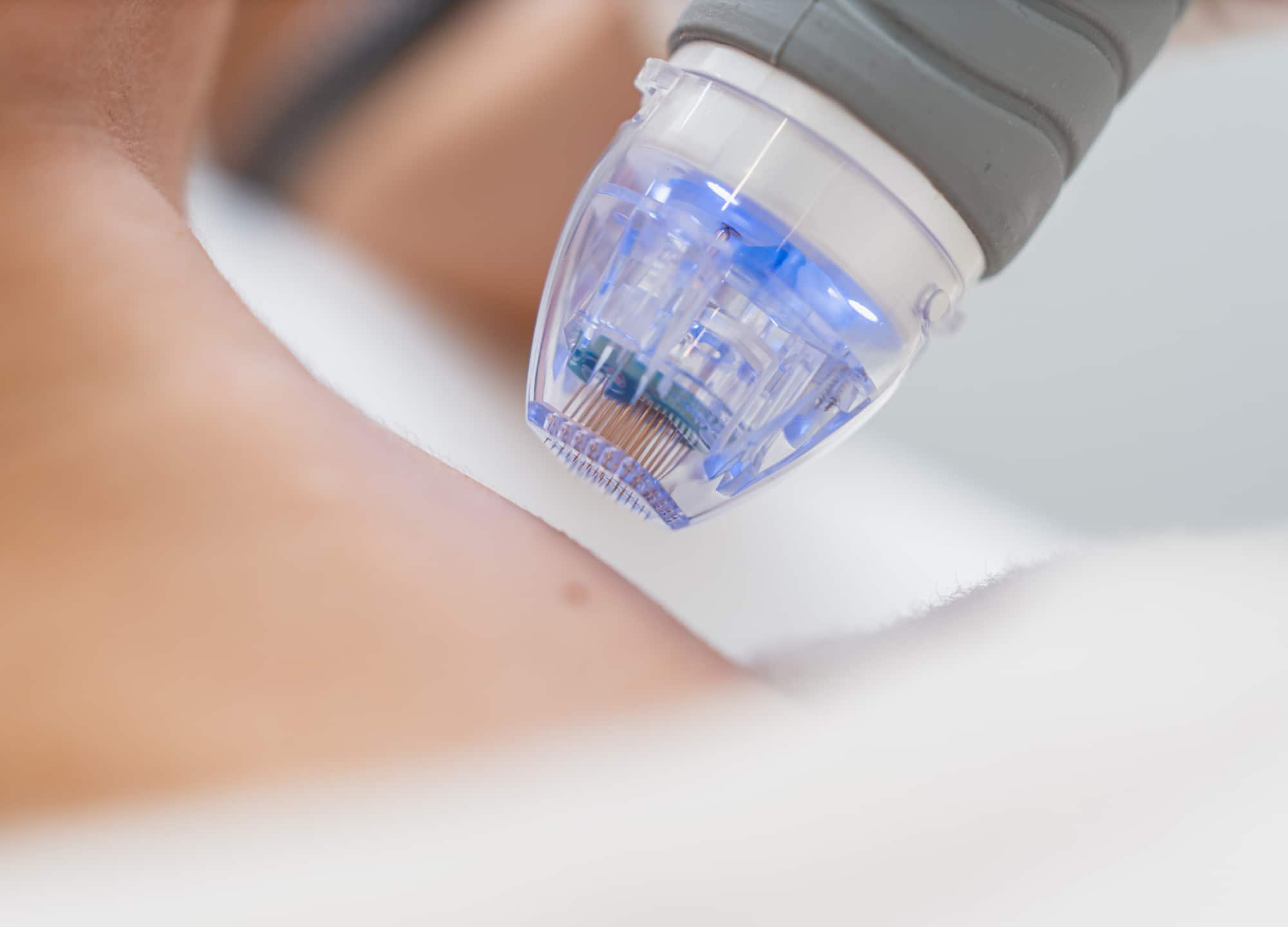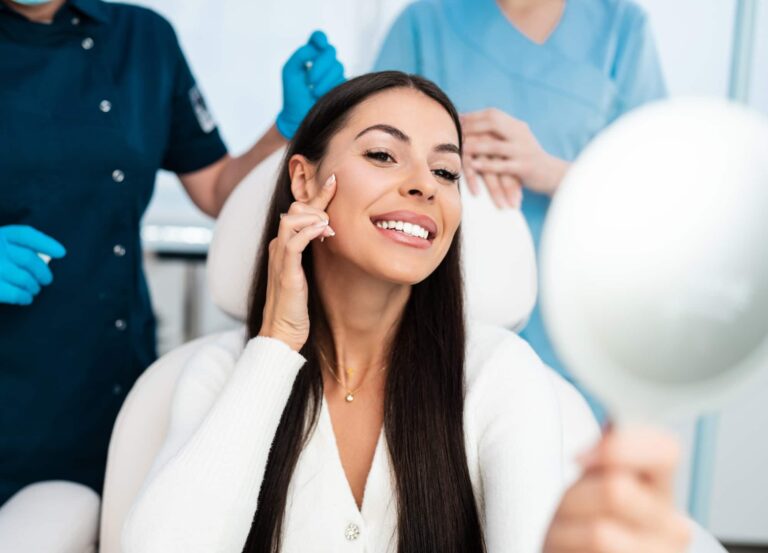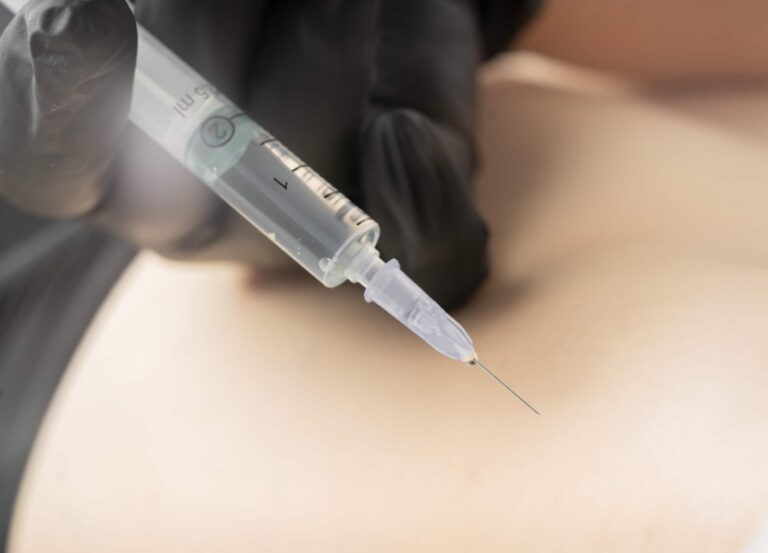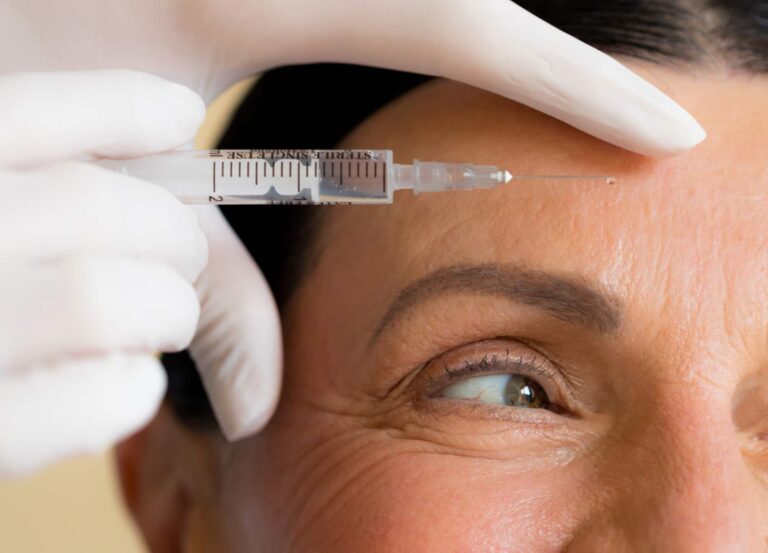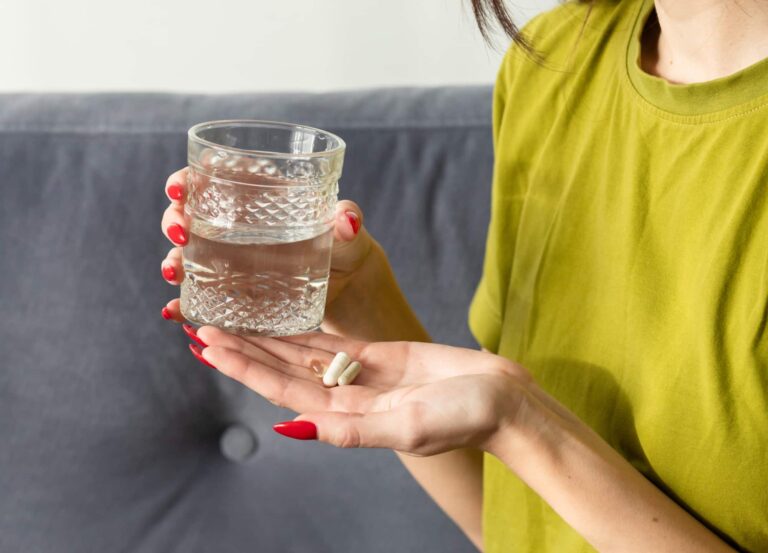Featured Experts
Dr. Gerald Imber, a board-certified plastic surgeon in New York City
Dr. David Shafer, a board-certified plastic surgeon in New York City
Alec Batis, a cosmetic chemist and the CEO and cofounder of Sweet Chemistry
Dr. Darren Smith, a board-certified plastic surgeon in New York City
Dr. Heidi Waldorf, a board-certified dermatologist in Nanuet, New York
There’s no question that aesthetic procedures come with risk. We’ve seen Botched, we’ve heard of life-threatening complications caused by poorly administered injectables, and we’ve witnessed people decrying buzzy treatments they’ve tried, due to bad results. Any doctor will tell you that even in skilled hands, devices and injectables can come with dangerous side effects. So why is it that everyday men and women are deciding to DIY their own cosmetic treatments?
There are entire internet communities dedicated to people seeking out, trying, and advising others on black-market devices and procedures. And the motivation behind it all is simple: cutting costs. “When there’s an opportunity to do something that you think is the same as what you are getting in a professional’s office for a tiny fraction of the price, people will attempt to do it,” says Dr. Gerald Imber, a board-certified plastic surgeon in New York City. Combine the rising prices of everything (thanks, inflation) with the power of social media, and we get a harmful and potentially deadly result. “The DIY movement on social media, especially during and post-COVID, has made people think they can do everything at home,” confirms Dr. David Shafer, a board-certified plastic surgeon in New York City. Here, we examine the alarming trend of DIYing aesthetic procedures and the ramifications.
DIY chemical peels
During the pandemic, Dr. Shafer treated a handful of patients who’d ordered and self-administered medical-grade peels “with disastrous effects.” There’s a shocking example of this via a Reddit post, which shares a screengrab of a woman giving her DIY chemical peel experience a rating of one star. “This acid junk burned my face and doesn’t heal; I’m blistered all over,” she says. The culprit? A bottle of 88% lactic acid, a common ingredient found in at-home and professional-grade skin-care formulas as well as other products. “It has a wide variety of functions beyond skin care,” says Alec Batis, a cosmetic chemist and the CEO and cofounder of Sweet Chemistry. “It’s used as a food additive, in cigarettes, wine, textiles, leather, and even—in combination with other ingredients—to prevent pregnancy.” Frequently, 88% lactic acid is used in lieu of sour mash in home-brewing setups for making beer or whiskey.
According to Dr. Shafer, professional peel concentrations of lactic acid can go up to 88%, but remember, these are administered under doctor supervision; at-home formulations are much lower. But interestingly enough, there’s actually no set limit for the use of lactic acid by the FDA, as it’s not classified as a drug, like salicylic acid is, says Batis. (You’ll know if a beauty product has an ingredient that’s classified as a drug—it’ll have a “drug facts” panel on the box.)
“There is no required compliance regarding concentration, pH, or public warnings, whether at home or in a professional setting,” Batis explains. The only rule is that the product must be tagged with a sun-sensitivity warning. “Many people have used this ingredient incorrectly, causing adverse experiences including chemical burns, dermatitis or rash, swelling, pigmentary changes, blisters or welts, pain, itching, and increased sunburn,” Batis warns.
Adds Dr. Shafer, “It’s like treating a burn patient. There is no easy fix and it can lead to permanent skin damage.” Even reconstructive surgery could be necessary, says Dr. Darren Smith, a board-certified plastic surgeon in New York City.
DIY face icing
Another individual on Reddit feared they’d permanently damaged their skin due to following the TikTok face-icing trend, which has been hailed as a genius trick for firming, tightening, and brightening the skin just by using an ice cube. “Face icing is a DIY skin-care trend on TikTok that is widely popular because it is accessible, cheap, and relatively safe,” says Dr. Shafer. Most medical experts, Dr. Shafer included, will tell you that there is significant risk in extended skin exposure to ice and that placing a barrier in between is a must—but the loudest voices advocating for trends tend not to be those of doctors.
“I saw so many TikToks about the benefits of icing your face for two to three minutes a day,” said the user. “These guys with perfect skin were saying it was the only skin care they did.” The user shared that most of the TikTok videos said not to use a barrier between your face and the ice. “My face is now permanently red or, at least, has been quite red for a few weeks now,” they said.
“I suspect [they caused] some degree of low-level frostbite, basically freezer burn, which in turn either aggravated or stimulated an increase in telangiectasia [fine blood vessels],” says Dr. Heidi Waldorf, a board-certified dermatologist in Nanuet, New York, who recommended the Redditor see a board-certified dermatologist for treatment.
In concept, and in occasional practice, many people find using chilled tools like jade rollers effective. And you must admit that there are plenty of social media trends out there that have offered positive results. “There’s often a seed of knowledge or common sense in home remedies, so you can’t dismiss them out of hand—you have to look into them and understand them for what they are,” says Dr. Imber. “Once in a while, there are things that actually make sense, which are usually adopted by the medical profession.” (For example, freezing temperatures drive cryolipolysis technology like CoolSculpting, which we’ll get into shortly.) “But things people are trying are walking closer and closer to the line of danger,” warns Dr. Imber. “Information is wonderful, but from whom you get the information is another story.”
DIY CoolSculpting, DIY Emsculpt, and DIY Morpheus8
Browse sites like AliBaba and Amazon, and it won’t take you long to find aesthetic devices that look similar or even exactly like the real thing, such as this cryolipolysis machine (a knockoff of the CoolSculpting device), muscle-toning technology (complete with Emsculpt’s logo), and a microneedling radiofrequency device that features the signature branding of InMode’s Morpheus8. These are highly viral treatments, and it only makes sense that people would want to try them on the cheap.
“All too often, aesthetic treatments are aggressively marketed without enough attention paid to potential downsides,” says Dr. Smith. “When the opportunity arises to seemingly replicate these services on their own for a fraction of the cost and there isn’t knowledge about the risks involved and how to mitigate them, people are going to try these things at home.”
However, the prices of these machines should raise red flags for the discerning DIYer. A series of any of the above professional treatments can cost thousands of dollars—and the devices themselves are priced far higher than that. In talking to experts who have invested in such devices, we know that the technology can cost upwards of $100,000, and that’s before purchasing consumables like treatment cycles, paddles, microneedling tips, etc.
“The reason the prices of in-office devices range from Porsche to Lamborghini level is because of all the research and testing that goes into the technology that produces the desired effect while maintaining safety,” explains Dr. Waldorf. With these cheaply priced machines, you won’t know what you’re getting—nobody does, because they’re counterfeit, not to mention not approved by the FDA.
The road to getting a device cleared or approved by the FDA can be a long one, especially if it comes with heightened risk. “The FDA categorizes medical devices into classes, based on risk level,” says Dr. Waldorf. “The class determines the required testing, regulations, and labeling and who can purchase and use it.” Clearances and approvals are rated from Class I (products in this category can include bandages and nonmotorized wheelchairs) to III (breast implants and implantable pacemakers), with risk levels increasing at each stage.
It’s hard to understand why these questionable devices are even available for purchase, but that is the risk of making purchases on the gray market. Anyone can make anything—and agencies created to protect people can’t always stop it. “The devices pass under the radar,” says Dr. Imber. “The FDA and the FTC will get a couple of complaints, see the devices, and crack down on them—and then they’ll pop up under a different name. It happens all the time.”
Using this technology without the proper education and training can result in major complications, even if you’re using the real device. Take Morpheus8, for example. “It is easy to lose sight of the fact that this is a very complex device that wields a significant amount of energy,” explains Dr. Smith. “These needles can reach a depth of 4 mm, which is at least twice as deep as at-home microneedling products—additionally, they are emitting heat that can cause serious burns.” Those who are buying these cheap, unregulated devices are also more likely to find additional ways to cut costs, like reusing the microneedling tips, which can cause severe infections.
Cryolipolysis has come under fire in recent years due to an increased focus on its risks, thanks to iconic ’90s supermodel Linda Evangelista, who revealed she’d suffered from the complication of paradoxical hyperplasia (PAH) after undergoing CoolSculpting. Though this complication is said to be rare, recent studies show it could occur in every 1 out of 138 patients. PAH is hard to correct even by skilled plastic surgeons, and it is by no means something a DIYer can resolve themselves.
And, of course, there’s the fact that the very nature of cryolipolysis is using freezing temperatures to destroy fat. One individual on Reddit, who purchased a cryo machine she found on Amazon, took it upon herself to treat her submental area (aka the double chin), to devastating results. “I permanently disfigured myself,” she says. Though she was mortified by what she’d done, she chose to use her mistakes as a public service announcement. “I want to curl up and hide in my shame and fear, wear a neck-covering mask for the rest of my life, and never tell anyone what I did,” she says. “But I’m writing this down because if it helps keep even one person from doing what I did, it’s worth it.”
This image shows the extent of her injuries, which are severe and appear to include frostbite, which Dr. Imber says is the equivalent of a third-degree burn and can lead to permanent scarring. “If the treatment is not precisely controlled, the temperature can get too cold or the exposure time can be too long,” says Dr. Smith of cryolipolysis. “This can result in the death of tissues other than fat, like skin.” Though the Redditor was initially too embarrassed to see a medical professional, she eventually sought treatment; her doctor said to expect significant scarring, like that of a burn victim, and that the help of a plastic surgeon may be necessary.
There is one device category that could be less dangerous than the others, though it still comes with risk—muscle-stimulating devices. “Electric stimulation of the muscles has been done for so many years in a much cruder fashion, they’re unlikely to be dangerous,” says Dr. Imber. “When you reach the danger zone, the flexion itself is so painful that you’ll know.” He notes that those that include energy, like RF, are much more of a risk, as they could burn the skin or cause uneven fat distribution.
While we highly, highly caution against stimulating your own muscles at home, those DIYing this treatment need to know that applicator placement is everything. Currently, Emsculpt Neo is approved for treatment of 10 areas on the body, including the abdomen and the glutes. But it cannot be safely used on the chest. “Applying an Emsculpt paddle to the chest to try to increase pectoralis strength will trigger a cardiac arrest,” warns Dr. Waldorf. Failure to consider contraindications can also put you in harm’s way: Potential conflicts between your medical history and a treatment are critical to understanding risk. “These treatments could be devastating in pregnancy or could cause serious bowel injury if performed in the vicinity of a hernia,” explains Dr. Smith.
DIY Botox and filler
In reviewing all the treatments that individuals are DIYing, it’s the self-administered neurotoxins and fillers that are most concerning. People are not only learning how to inject themselves but also encouraging others to do it to save costs. There’s a whole community of people like this on Reddit, trading tips on where to get the cheapest neurotoxin or how to get them into countries with strict customs laws. (Users warning others of the dangers that come with DIY treatment are often bullied out of the group.) These self-taught injectors often use medical teaching videos, such as these created by Dr. Tim Pearce.
While some doctors worry about this type of content being readily accessible, there’s no doubt the information can be helpful to those actually in the field of aesthetics. “These posts are meant to educate professionals, not the public,” points out Dr. Waldorf. “I can watch a variety of educational videos meant for other professions—it doesn’t mean I should be doing those things.”
One of the most popular neurotoxins used by DIY injectors is Innotox, which is sold in a liquid form and fully ready to inject. All five FDA-approved neurotoxins—Botox, Daxxify, Dysport, Xeomin, and Jeuveau—are sold in a lyophilized, powder format which is then turned into a liquid solution. “There are no FDA-approved neurotoxins that are sold in a reconstituted form,” says Dr. Smith.
Innotox appears to be approved by the Ministry of Food and Drug Safety (MFDS), Korea’s government agency for pharmaceutical regulation and approval. It’s worth noting, however, that Innotox’s manufacturer, Medytox, has had its license revoked in the past by MFDS for using unapproved ingredients and submitting manipulated data. “It is impossible to know exactly what these products are and how they are made,” warns Dr. Smith. “This is one of the many reasons that they are so dangerous.”
You can’t buy FDA-approved injectables like Botox Cosmetic or Juvéderm without a medical license, and for good reason—these are quite literally deadly products when in untrained hands. Remember that FDA classification system we mentioned earlier? Injectable fillers are actually classified as devices within Class III, the most highly regulated category of FDA-approved devices with the greatest level of risk.
“Even in the hands of alleged professionals, fillers are accidentally injected in the wrong places,” says Dr. Imber. “Without a full understanding of anatomy and technique, the risk of vascular occlusion—injecting filler directly into a vessel and blocking it or a vessel further along and causing ulceration, blindness, or even stroke—is high,” Dr. Waldorf warns. And unlike at-home, untrained providers, doctors are prepared with the knowledge and tools to address these life-threatening issues.
And by the way, it’s not just filler that can kill you when injected poorly. Most people associate a bad neurotoxin result with a wonky eyebrow or ptosis, which will go away after a few months, but there are much more serious risks. Botox is classified as a drug—which often takes more than a decade to get approved by the FDA—and is derived from an actual deadly toxin. “There have been cases of significant overdoses leading to actual botulinum poisoning, requiring months on a ventilator,” warns Dr. Shafer. Adds Dr. Imber, “If you try to soften platysma bands, you can paralyze your larynx and die.” These attempts to save money can come at the greatest cost of all—your life.







